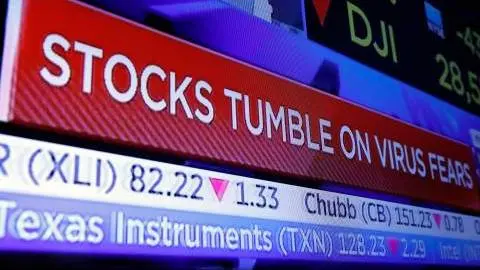Eurozone: Just when things were looking up
The eurozone economy started the year on a stronger footing. But the coronavirus disruption is likely to become a major drag that might only peter out in the course of the second quarter. Negative GDP growth in the first half now looks likely
Before and after
Just when we thought that things were looking up and the manufacturing recession was largely behind us, the coronavirus dealt a serious blow to the growth outlook, blindsiding global central banks and sending financial markets into panic mode.
While data from the first two months of the year was encouraging, it largely reflects the level of sentiment before infections started to rise significantly in Europe. As such, it's no guide to the future.
- Like the PMI indicator and the Ifo survey, the European Commission’s economic sentiment indicator improved in February, rising to 103.5 from 102.6 in January, which was better than expected.
- The Eurocoin indicator, which is a monthly estimate of the eurozone’s growth pace, rose to 0.28 in February, the third consecutive increase.
So the good news is that things were improving before the outbreak, with the inventory correction in the manufacturing sector largely over, setting the stage for a recovery. The bad news, of course, is that Covid-19 is now clearly jeopardising a further gradual acceleration in growth. On top of that, things now also look a bit uglier in the services sector, which was up till now the stronghold of the economy preventing a more severe slowdown. Leisure, tourism and transport will inevitably suffer from a more fearful consumer. The fact that Italy decided to close schools and universities until mid-March might be wise from a precautionary point of view, but is at the same time exacerbating the negative growth impact.
The year started on a good footing

Negative growth in the first half
Right now, it is difficult to even make a guesstimate as to how profound the Covic-19 epidemic will be and how long it will last. But if we look at the Chinese experience, there is some hope that the peak will be reached in the second quarter, although there is no guarantee this will happen. This would mean that the supply disruptions and drop in demand are likely to affect both the first and second quarters. We now expect a negative growth figure for the first half of the year. Thereafter, we expect a temporary acceleration in growth (bear in mind that inventory levels are already lower), but not all lost GDP growth will be recovered. As such, we are now looking at 0.5% growth in 2020 and 1.1% in 2021.
If the Chinese experience is any guide

Inflation to remain subdued
As expected, inflation fell from 1.4 to 1.2% in February as lower energy prices started to push the headline figure down. Core inflation inched up from 1.1 to 1.2%, probably stoked by some Covid-19 induced supply disruptions, but we wouldn’t call this a lasting trend. Notwithstanding the better business confidence figures in February, selling price expectations actually fell in all sectors except industry, a sign that inflationary pressures are still largely absent. What’s more, inflation might face renewed downward pressure in the wake of the economic slowdown.
ECB between a rock and a hard place
Politicians are likely to take some measures to contain the negative impact of Covid-19. The Italian government has already proposed a tax credit for companies experiencing a 25% fall in revenues. At the same time, there will be strong pressure on the European Central Bank, especially given the impromptu Federal Reserve rate cut. The ECB thinks this is a matter for budgetary authorities. And we know that the marginal utility of a further rate cut seems close to zero. But if there is internationally-coordinated action from central banks to counter a tightening of financing conditions, we could still see the ECB, albeit grudgingly, cut rates a bit further, and symbolically increase the amount of asset purchases.
The ECB thinks measures to contain the negative impact of Covid-19 is a matter for budgetary authorities. And we already know that the marginal utility of a further rate cut seems close to zero
However, the ECB will try to avoid this scenario and in a first instance work on other levers. As such, we think the Bank is more likely to support the banking system by increasing the size of the negative rate exempt tier of excess liquidity holdings. There is also talk of a Targeted Longer-Term Refinancing Operation directed at small- and medium-sized enterprises, though it will take a number of weeks to work out the specifics.
What looks certain is that any thoughts of monetary tightening can now be shelved for quite some time.
This publication has been prepared by ING solely for information purposes irrespective of a particular user's means, financial situation or investment objectives. The information does not constitute investment recommendation, and nor is it investment, legal or tax advice or an offer or solicitation to purchase or sell any financial instrument. Read more
Download
Download article
6 March 2020
March Economic Update - Coronavirus: The unknown and unprecedented risk This bundle contains 9 Articles